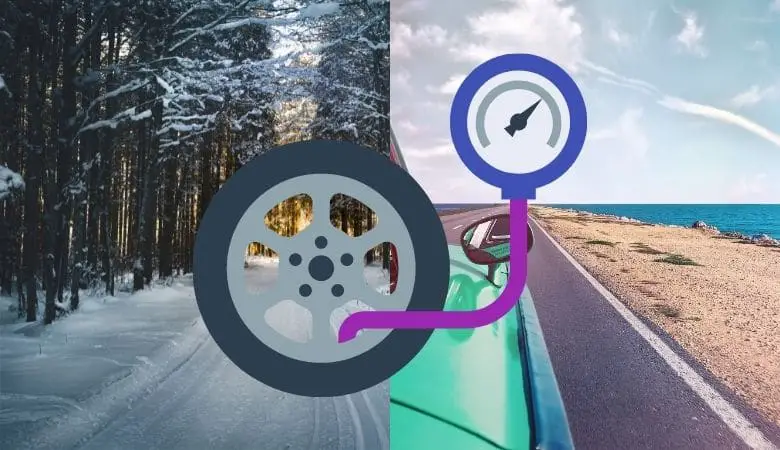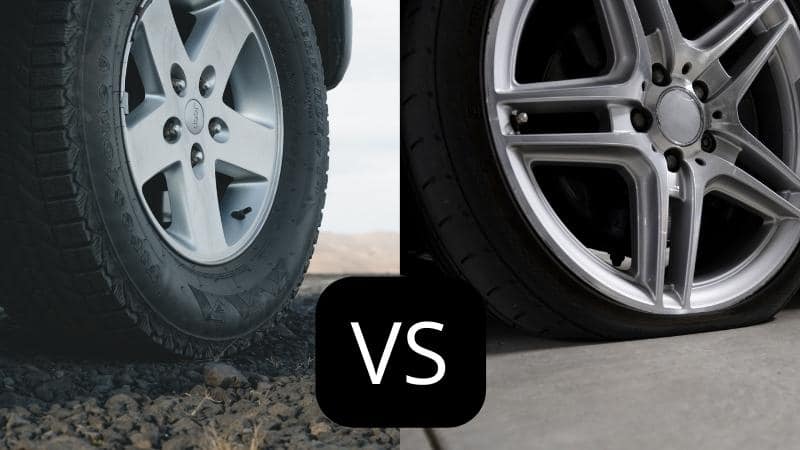Tire pressure is one of the most important aspects of car maintenance. It is important to at least maintain the specified air pressure in tires to increase their durability and ensure the safety of your car.
Properly inflating your car tires according to the manufacturer’s recommendation is a critical piece of tire maintenance.
Tire pressure can be affected by several factors, such as the vehicle’s weight and the type and size of the tires. For each car, a different pressure level is required for the tires. However, the temperatures may fluctuate depending on your location, making it difficult to measure and maintain recommended air pressure in tires.
This fluctuating temperature and its constant effect on tire pressure has led to the question among tire owners: Is it better to have higher or lower tire pressure than prescribed?
Neither of these options is safe for the car nor its tires, as both options are potentially dangerous. With that said, if we must choose one, it’s better to have slightly overinflated tires than prescribed. Slight overinflation is simply safer than slight underinflation.
Tire maintenance is one of the most important things you can do for your car from a safety and cost standpoint. A quick and easy way to maintain your tires is to ensure the correct tire pressure. And to successfully do so, continue reading!
How Important is Maintaining Recommended Tire Pressure?
One of the best services you can provide for your car is proper tire maintenance, which is safe and minimizes maintenance costs. A quick and easy way to maintain your tires is to ensure the correct air pressure in them.
You should keep your car’s tire pressure at its recommended PSI, which is the industry rating for air pressure in a tire. It is recommended that tires are inflated to between 32 – 40 psi for regular cars and double that number for trucks. Usually, you can find the ideal tire pressure on a sticker in the driver’s door or the owner’s manual.
Nevertheless, you may check the appropriate tire rating with your local auto repair shop for any new tires you may purchase for your vehicle.
How Temperature Affects Tire Pressure

Temperature changes are a major factor in fluctuating tire pressures. In high temperatures, the air in your tires expands, taking up more space. However, your tire’s air contracts at low temperatures, taking up less volume.
Tire manufacturers dictate a recommended tire pressure level for your car. However, those psi numbers are set for when your tires are cold. If you fill up your tires in the winter, ensure it is done while cold. In general, for every 5.6 °C drop in temperature, tire pressure for most passenger vehicles will decrease by one psi and two psi for truck tires.
Nevertheless, since most people do not have an air compressor at home, you are likely to drive to a gas station to have them filled. Be sure to measure your tire pressure before you leave home. Once you arrive at the gas station, measure the tires again, and add pressure to your tires based on your first reading.
Higher Tire Pressure vs. Lower Tire Pressure?
Maintaining proper tire pressure is important to guarantee safety and reduce cost. If your tires are under-inflated, there is a high chance of increased friction and loss of steering control. A lower tire pressure means an increase in the amount of rubber meeting the road, resulting in reduced tire life and gas efficiency.
However, overinflating your tires means that the tires become rigid and will ride higher off the ground, thereby reducing traction and your ability to control the car better. An over-inflated tire also risks blowing a flat because it has too much air pressure. This can result in loss of control during an explosion, resulting in accidents.
Therefore, is it better to have higher or lower tire pressure than prescribed? Neither of these options is safe for the car nor its tires, as both options are potentially dangerous. Hence, it is best to ensure proper tire inflation to control your vehicle better and conserve gas.
Special Conditions For Manipulating Tire Pressure
There are certain circumstances in which you may need to adjust tire pressure to meet specific requirements, such as with racers, who lower their tire pressure to achieve a larger contact patch while racing on a dry track.
Nevertheless, as a non-racer, we advise that your tire pressure be kept at recommended psi to avoid hydroplaning, which may lead to loss of traction and make the vehicle incapable of responding to steering inputs from the driver.
Hi, my name is Niklas, the head content creator & CEO of Whirling Wheelz. I am very interested in vehicles of all kinds, mainly cars. I have a car mechanics degree from high school and a big hobby of mine is to follow the WRC (World Rally Championship) both online and through travel.


